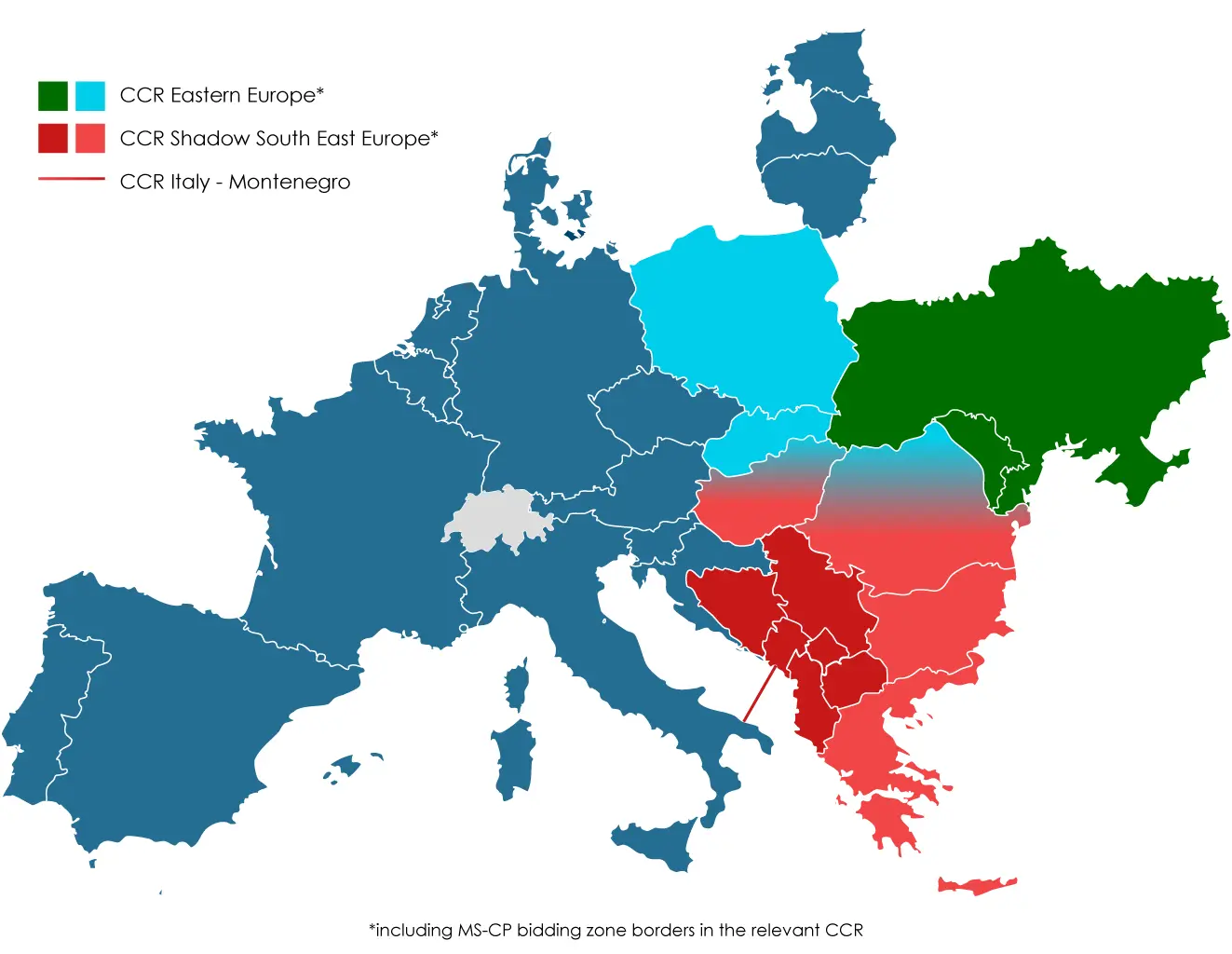General Provisions

NEMOs designation
Each Contracting Party electrically connected to a bidding zone in another Contracting Party or Member State shall ensure that one or more NEMOs are designated by six months after the entry into force of this Regulation to perform the single day-ahead and/or intraday coupling.
If a national legal monopoly for day-ahead and intraday trading services which excludes the designation of more than one NEMO already exists in a Contracting Party or Contracting Party’s bidding zone at the time of the entry into force of this Regulation, the Contracting Party concerned must notify the Energy Community Secretariat within two months after entry into force of this regulation and may refuse the designation of more than one NEMO per bidding zone.
NEMOs tasks
By twelve months after the entry into force of this Regulation all NEMOs from Contracting Parties and Member States shall submit to all regulatory authorities, the Energy Community Regulatory Board and the Agency for the Cooperation of Energy Regulators a plan on integration of NEMOs from Contracting Parties in the MCO functions, and in the agreements between NEMOs and with third parties. The plan shall include a detailed description and the proposed timescale for implementation, and a description of the expected impact of such integration on the performance of the MCO functions.
All TSOs and NEMOs Terms and conditions or methodologies
TSOs and NEMOs shall apply the following methodologies, any amendments thereof shall be subject to approval by the Agency for the Cooperation of Energy Regulators. The Articles mentioned below refer to Commission Regulation (EU) 2015/1222, links are provided to the respective approved methodologies:
-
the plan on joint performance of MCO functions in accordance with Article 7(3);
-
the capacity calculation regions in accordance with Article 15(1);
-
the generation and load data provision methodology in accordance with Article 16(1);
-
the common grid model methodology in accordance with Article 17(1);
-
the proposal for a harmonised capacity calculation methodology in accordance with Article 21(4);
-
back-up methodology in accordance with Article 36(3);
-
the algorithm submitted by NEMOs in accordance with Article 37(5);
-
products that can be taken into account by NEMOs in the single day-ahead and intraday coupling process in accordance with Articles 40(1) and 53(1);
-
the maximum and minimum prices in accordance with Articles 41(1) and 54(2);
-
the intraday capacity pricing methodology to be developed in accordance with Articles 9(2), 9(6) and 55(1);
-
the intraday cross–zonal gate opening and intraday cross-zonal gate closure times in accordance with Article 59(1);
-
the day-ahead firmness deadline in accordance with Article 69;
-
the congestion income distribution methodology in accordance with Article 73(1).
Regional Terms and conditions or methodologies
The proposals for the following terms and conditions or methodologies and any amendments thereof shall be subject to approval by all regulatory authorities of the concerned region:
-
the common capacity calculation methodology in accordance with Article 20(2);
-
decisions on the introduction and postponement of flow-based calculation in accordance with Article 20(2) to (6) and on exemptions;
-
the methodology for coordinated redispatching and countertrading in accordance with Article 35(1);
-
the common methodologies for the calculation of scheduled exchanges in accordance with Articles 43(1) and 56(1);
-
the fallback procedures in accordance with Article 44;
-
complementary regional auctions in accordance with Article 63(1);
-
the redispatching or countertrading cost sharing methodology in accordance with Article 74(1).
The following terms and conditions or methodologies and any amendments thereof shall be subject to individual approval by each regulatory authority or other competent authority of the Contracting Parties concerned:
-
where applicable, NEMO designation and revocation or suspension of designation in accordance with Article 4(2), (8) and (9);
-
if applicable, the fees or the methodologies used to calculate the fees of NEMOs relating to trading in the day-ahead and intraday markets in accordance with Article 5(1);
-
proposals of individual TSOs for a review of the bidding zone configuration in accordance with Article 32(1)(d);
-
where applicable, the proposal for cross-zonal capacity allocation and other arrangements in accordance with Articles 45 and 57;
-
capacity allocation and congestion management costs in accordance with Articles 75 to 79;
-
if applicable, cost sharing of regional costs of single day-ahead and intraday coupling in accordance with Article 80(4).





